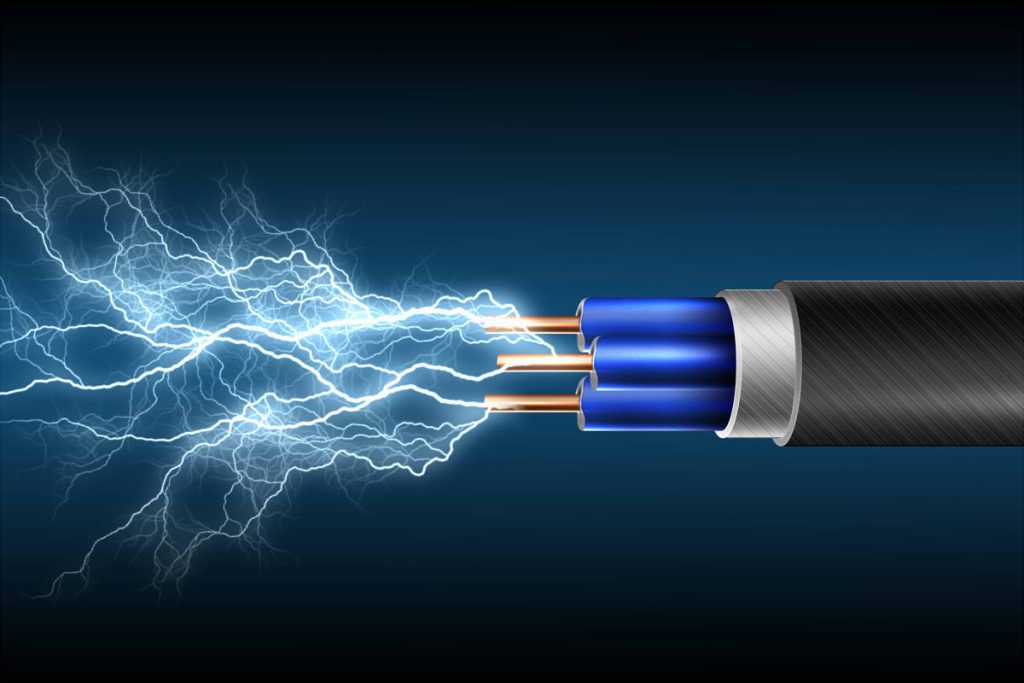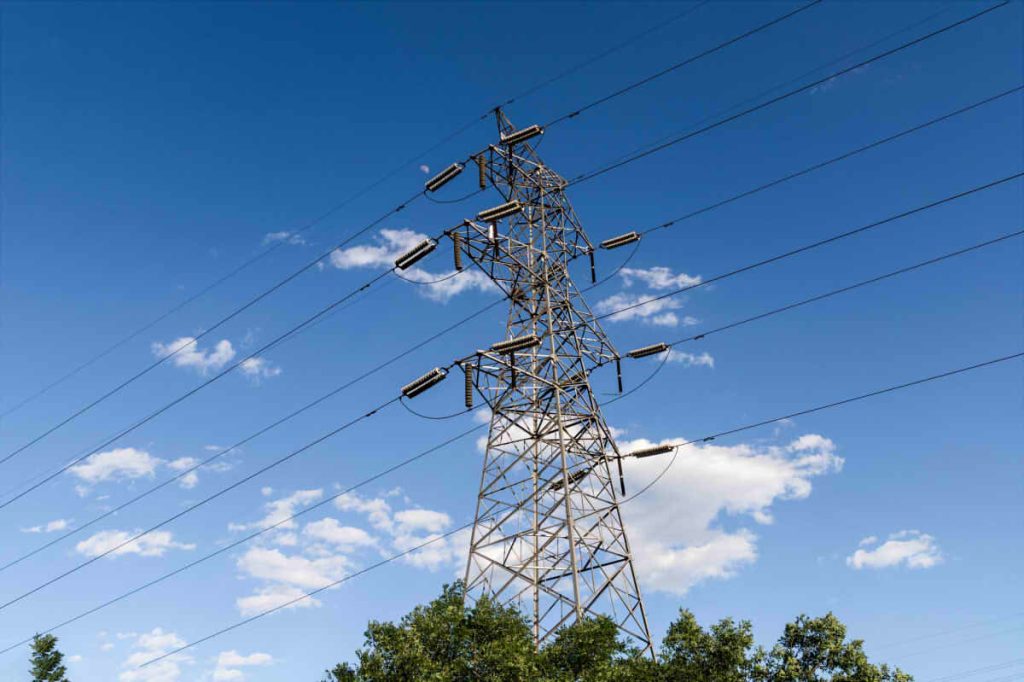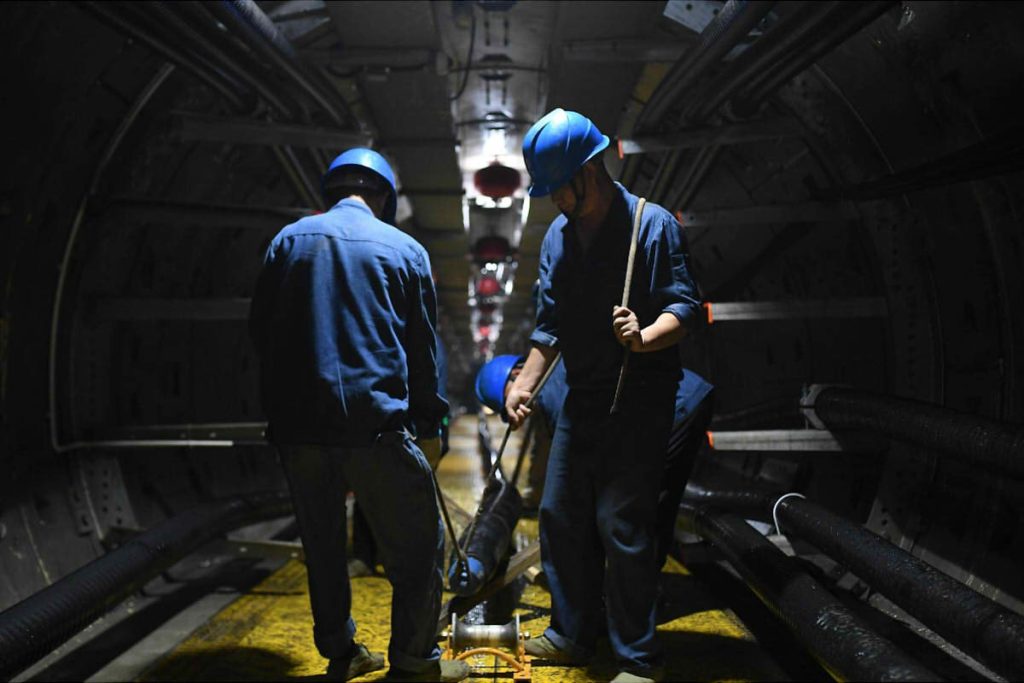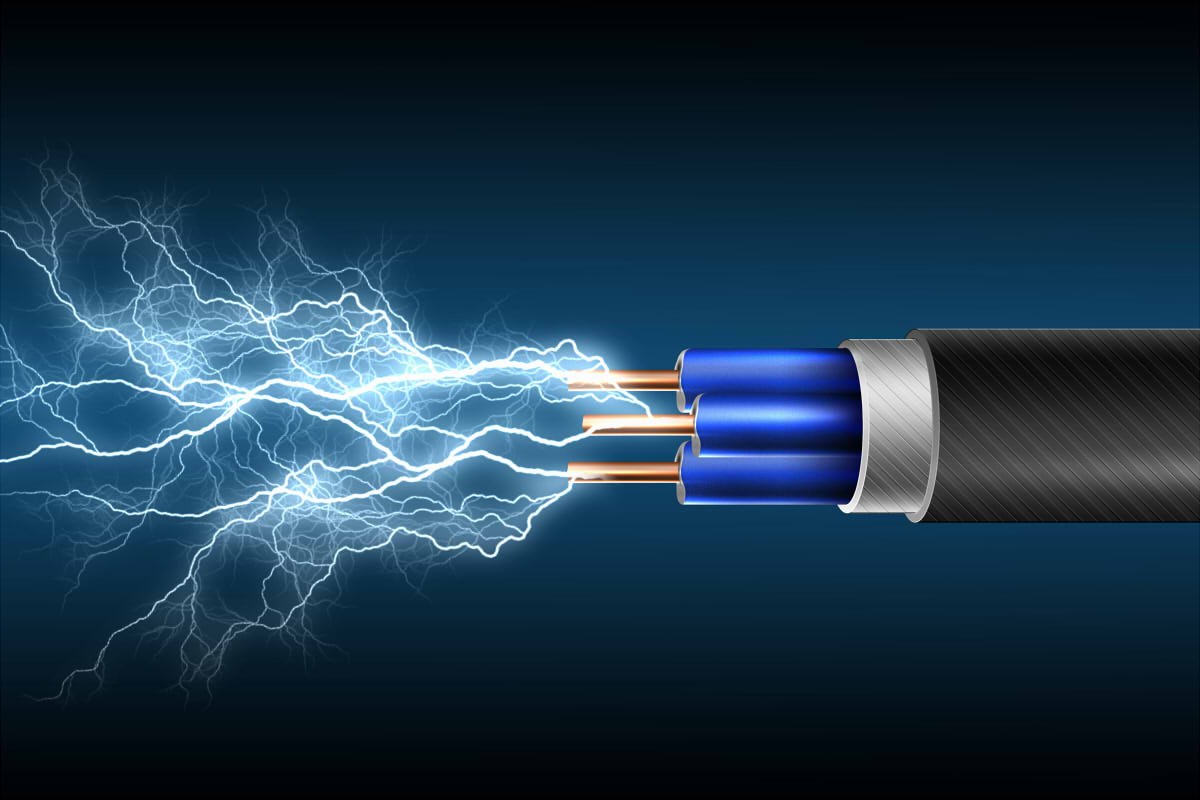The speed of transmission of electricity is generally considered equal to the speed of propagation of electromagnetic waves., namely, The speed of light. Nevertheless, through observations, It has been discovered that when an entire city loses power for one night and is then restored, the city lights don't turn on at the same time. Some lights turn on before others, and even some areas of the city have lights that come on before others. The time difference between the lights that come on first and those that come on later can be seven or eight seconds or more. How can this be explained? What is the speed of transmission of electricity through cables?

The speed of light is approximately 300,000 kilometers per second, while the total length of distribution cables in a large city does not exceed 10,000 kilometres. Therefore, in theory, the time difference in the illumination of all city lights should not be more than one second. To understand this problem, we must analyze the principles of electricity transmission.
Table of Contents
- The Principles of Electricity Transmission
- Energy Transmission in Electric Cables
- Why is the electricity not restored at the same time?
The Principles of Electricity Transmission
Wrong concept: Electricity equals electromagnetic waves
Electric current in cables, either continuous or alternating, is the movement of charge carriers, namely, electrons. Secondly, Electromagnetic waves involve the movement of electric and magnetic fields (fields that are not physical substances). According to the theory of relativity, electric and magnetic fields can be unified into a single “electromagnetic field” in different situations, but we won't go into detail here. Current flows through conductors, while electromagnetic waves propagate through media or vacuum.
Wrong concept: The speed of current is equal to the speed of light divided by the square root of the product of the dielectric constant and the magnetic permeability.
The speed of light divided by the square root of the product of the dielectric constant and the magnetic permeability gives the speed of electromagnetic waves in a medium. Lead wires are not medium, but metals. Electromagnetic waves cannot propagate through electrical cable conductors. Nevertheless, It is important to note that in certain conditions, electromagnetic waves can propagate on the surface of conductors, what are known as surface waves, although this is not related to the transmission of electricity in this context.
Speed of electric current
In a continuous section of a conductor cable, when an electric current is applied, An electric field is created between the ends of the conductor. This electric field carries information about changes in the source of the field at a speed close to the speed of light.. These electric fields can drive the movement of free electrons, which gives rise to electric current.
This process does not require electrons to travel from one end of the conductor to the other for electric current to be established.. It is similar to turning on a water tap., where water flows immediately when the tap is turned on, without the need for water to travel from the tank to the tap. The speed at which energy is transmitted from one end to the other is due to the electric field, not to electrons.
Since the formation of electric current involves the rapid establishment of the electric field, that practically moves at the speed of light, The speed of electric current is approximately equal to the speed of light.
Energy Transmission in Electric Cables
Cable transmission capacity
Although the speed of electric current is close to the speed of light, The transmission capacity of electrical cables is finite. The capacity of the electric power transmission lines depends on several factors, including line voltage level, the cross-sectional area of the conductors, environmental conditions and line length, among others. The most commonly used formula to calculate the capacity of a line is:
Line capacity = Voltage × Conductor cross-sectional area × Transmission capacity factor
Capacity is commonly measured in kilowatts (kW) the megavatios (MW), the voltage in kilovolts (kV), and the cross-sectional area of the conductor in square millimeters (mm2). The transmission capacity factor is an empirical value that takes into account the technical characteristics and environmental conditions of the line..
Impact of voltage level
Voltage level refers to the voltage used in an electrical power transmission line.. Usually, Transmission lines with higher voltage levels have greater capacity. This is because a higher voltage can reduce the electrical current and, Thus, reduce energy losses in the line. Nevertheless, las high voltage power lines They also require greater insulation and additional security measures. Therefore, when choosing a voltage level, a variety of factors need to be considered comprehensively.

Conductor cross-sectional area selection
Conductor cross-sectional area refers to the cross-sectional size of conductors in an electrical power transmission line.. The choice of conductor cross-sectional area must meet two conditions: first, must be able to withstand the required current load and, second, must ensure that the driver's temperature remains within a safe range. In general, as the conductor cross-sectional area increases, line capacity also increases, but at the same time, This can increase power transmission costs and losses..
Consideration of transmission capacity factor
The transmission capacity factor is an empirical value that is used to take into account the technical characteristics and environmental conditions of the line.. This factor is influenced by several factors, as the material of the conductors, the length of the line, the ambient temperature, wind speed, among others. Different transmission capacity factors can be applied to different types of lines to reflect their respective transmission capacities..
A practical example
To better understand the calculation of line transmission capacity, we can use a practical example. Suppose we have a transmission line with a voltage level of 110 kV, a cross-sectional area of the conductor 300 mm² and a transmission capacity factor of 0.9.
According to the calculation formula mentioned above, we can determine the capacity of this line:
Capacity = 110 kV × 300 mm² × 0.9 = 29.7 MW
Therefore, The capacity of this transmission line is 29.7 megawatts.
Why is the electricity not restored at the same time?
In fact, The reason why electricity is restored in stages after a city blackout is because the electrical grid is a complex system made up of numerous cables, controllers, relays and other components. Although current transmission is fast, The process involves calculations in the controllers and responses of the relays, what takes time.

In general, the moment the equipment starts up, the current is very high, sometimes even more than ten times the normal operating current. If all devices on the same line were activated at the same time, the instantaneous and high current would undoubtedly activate the protection devices, which would result in a power outage.
Besides, electricity for a city comes from multiple supply lines. It is underground cable lines They should also be brought into operation in stages to avoid significant impacts on higher-level electricity supply facilities..
In summary, although the speed of transmission of electricity through cables is practically equal to the speed of light, Restoring electricity to a city after a blackout does not occur instantly due to the complexity of the electrical grid and the need to safely coordinate and balance the load. Control systems and protection devices play a crucial role in ensuring that electricity is restored in a controlled and safe manner to different parts of the city, avoiding overloads and unexpected cuts.

